The Port de Herm harbour is located just opposite to the harbour of St Peter Port. The distance from Guernsey to Herm is a staggering three nautical miles and this makes it a popular trip destination all year round. The high season is during the summer with up to 100 thousand tourists in total visiting Herm on a day trips. A day tripping is convenient as there is a good ferry connection between Herm and Guernsey.

The western wind was blowing when we arrived to Herm. Despite of this we first wanted to try if the harbour of Herm on the western coast would be sheltered by Guernsey. On our arrival the buoys at the bay were bobbling happily in waves and we decided to continue around the island to the eastern coast and the Shell Beach Bay in a search of calmer waters.
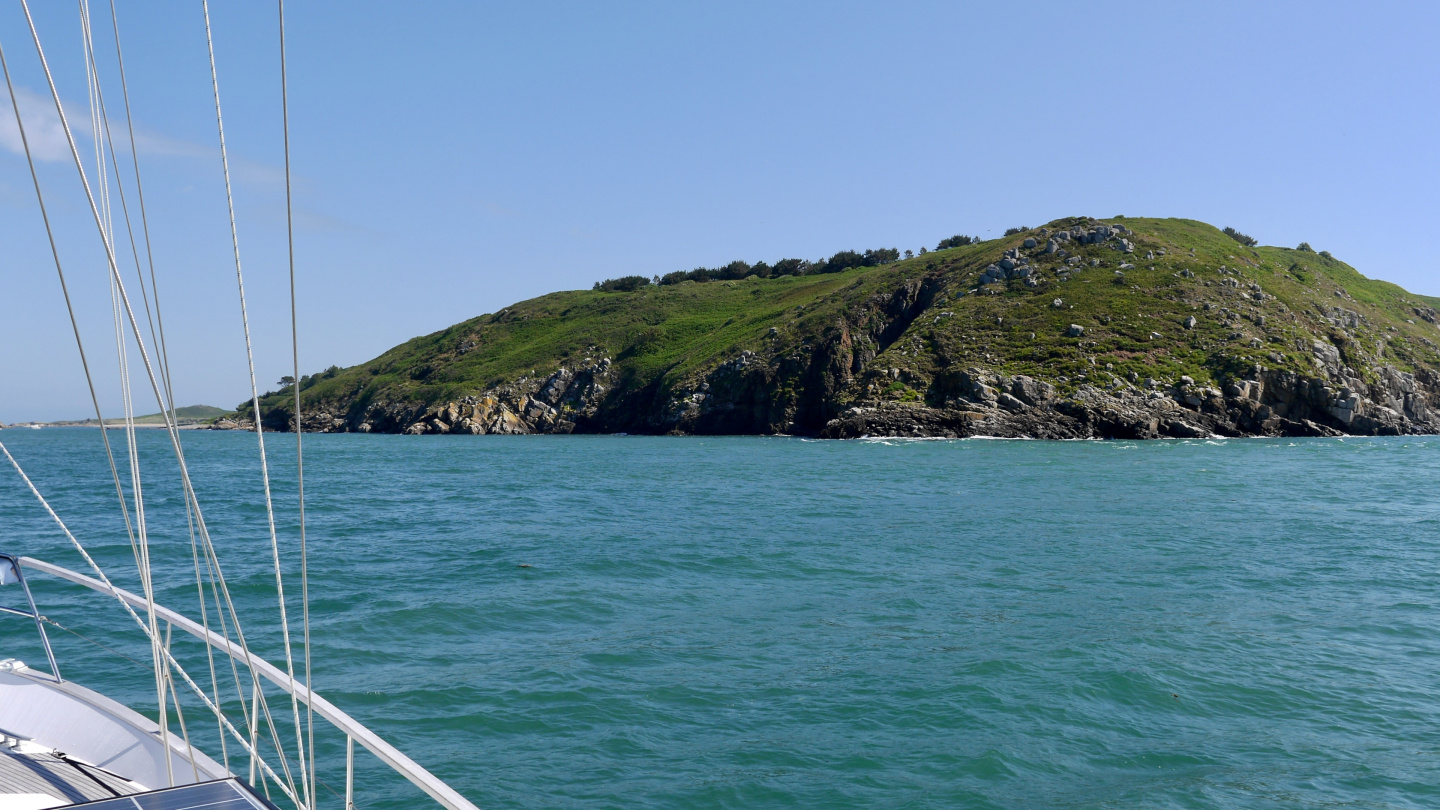

There are several anchorages on the east side of Herm. All of them are unsheltered and anchoring is possible only in very settled weather. Our plan was to have a walk around Herm and then for the night to continue to neighbour island Sark.
The tide was 8 metres and we carefully calculated the amount of the cable we need for keeping her floating until we’re back onboard from the island tour. As soon as the anchor was well set we put Pikku Suwena into water and went ashore. Looking from the dinghy it looked like and felt that the swell on the bay was not too bad and there is no surf on the beach. The truth was different. When the bow of the dinghy hit the beach we were immediately struck by a surf wave from behind, turning the dinghy sideways. And then there were two rather wet sailors pulling the dinghy above the high water line so it would still be there waiting for our return.
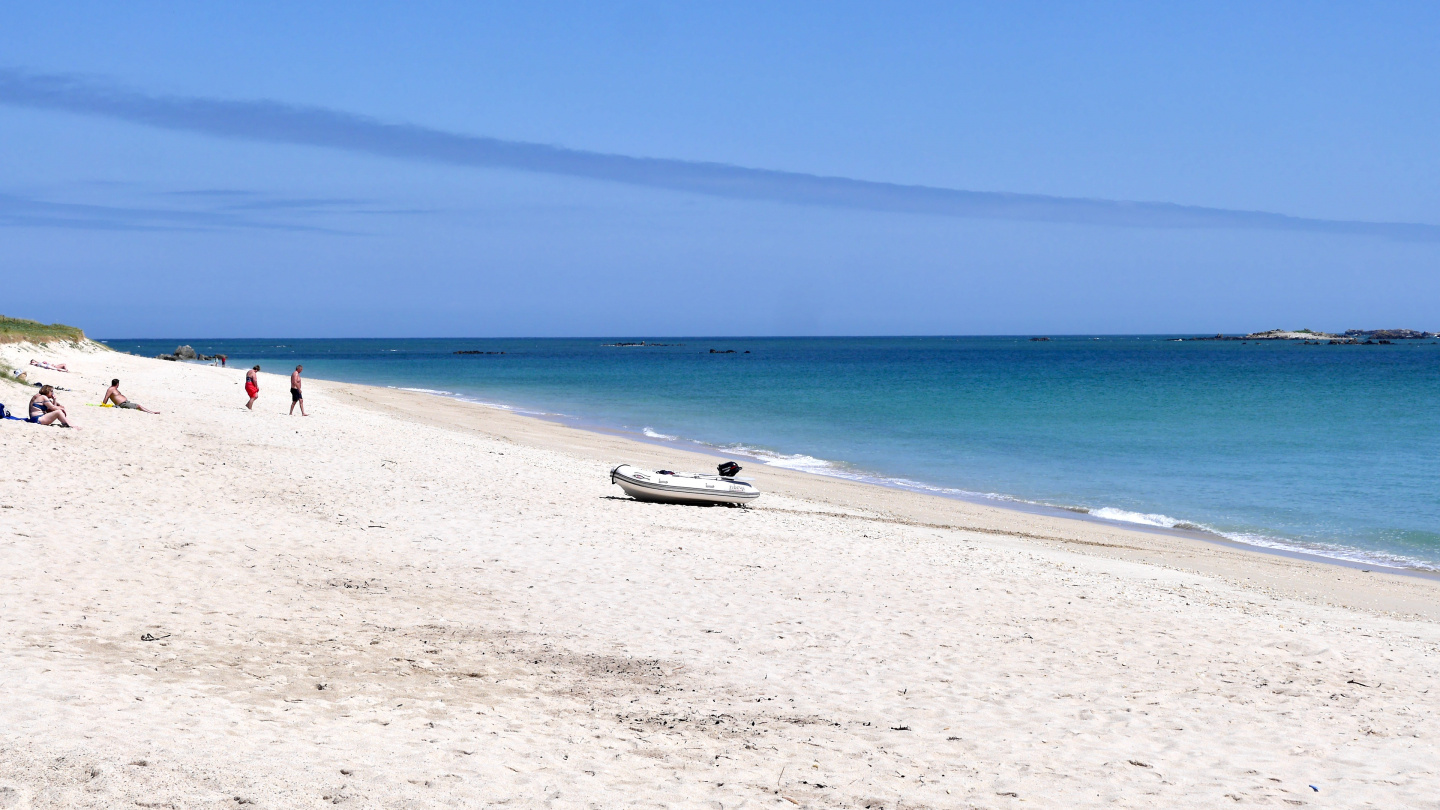
Herm is a tiny island with only 60 permanent residents living there. The island is 2.4 kilometres long and 0.8 kilometres wide with several footpaths around and across it. At first we walked to the northern coast, circling the island counter clockwise.

The terrain of the northern side of Herm consists of low hills and sandy beaches. The path was easy to walk and soon we were on the western side where the few houses of Herm like a school, a chapel, a hotel and few restaurants are located as well. There is also a campsite for tents that was swarming with happy campers.
We enjoyed a quick lunch at the Mermaid restaurant and continued our island tour. After passing the Herm harbour started the more challenging part as the island’s southern coast has taller hills and rocky cliffs.

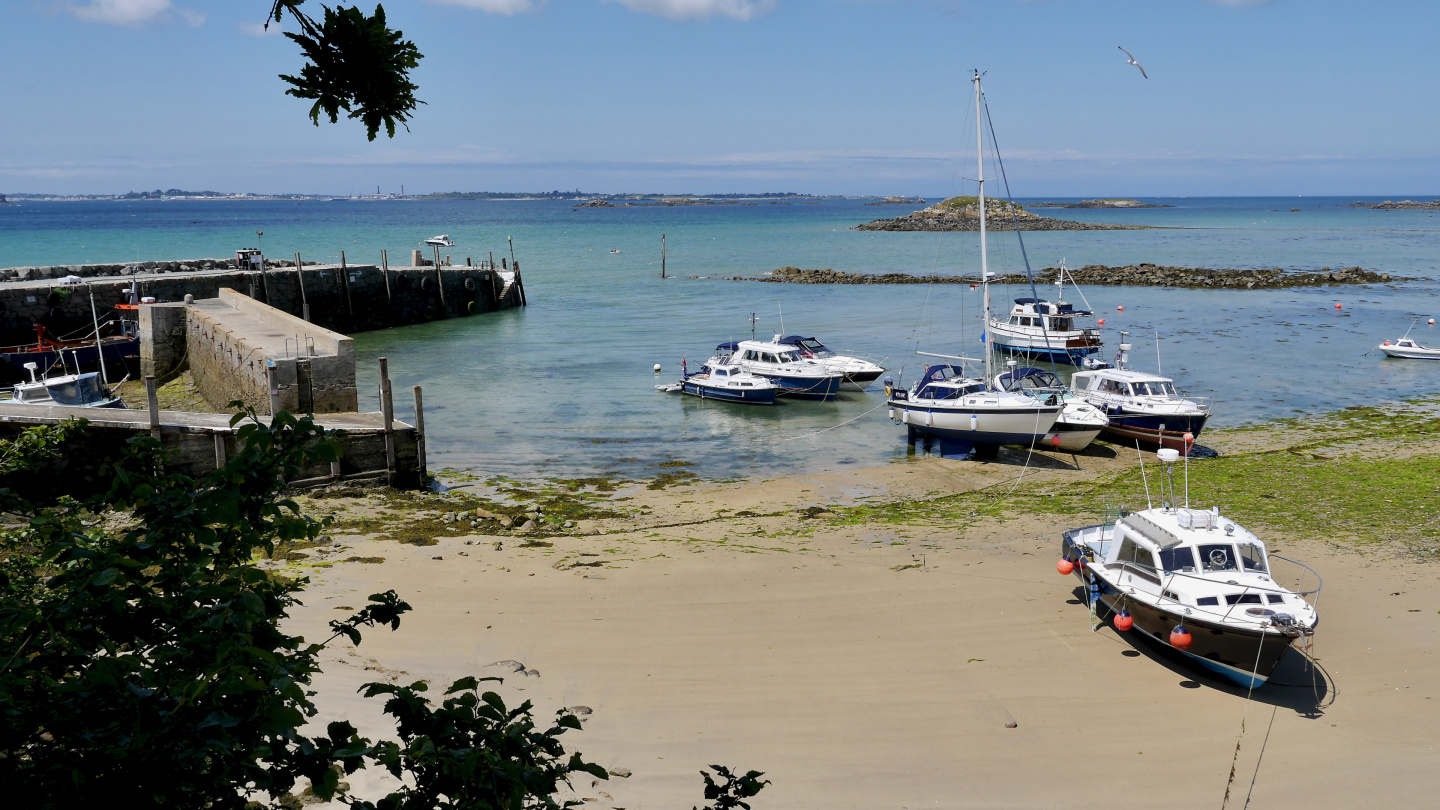
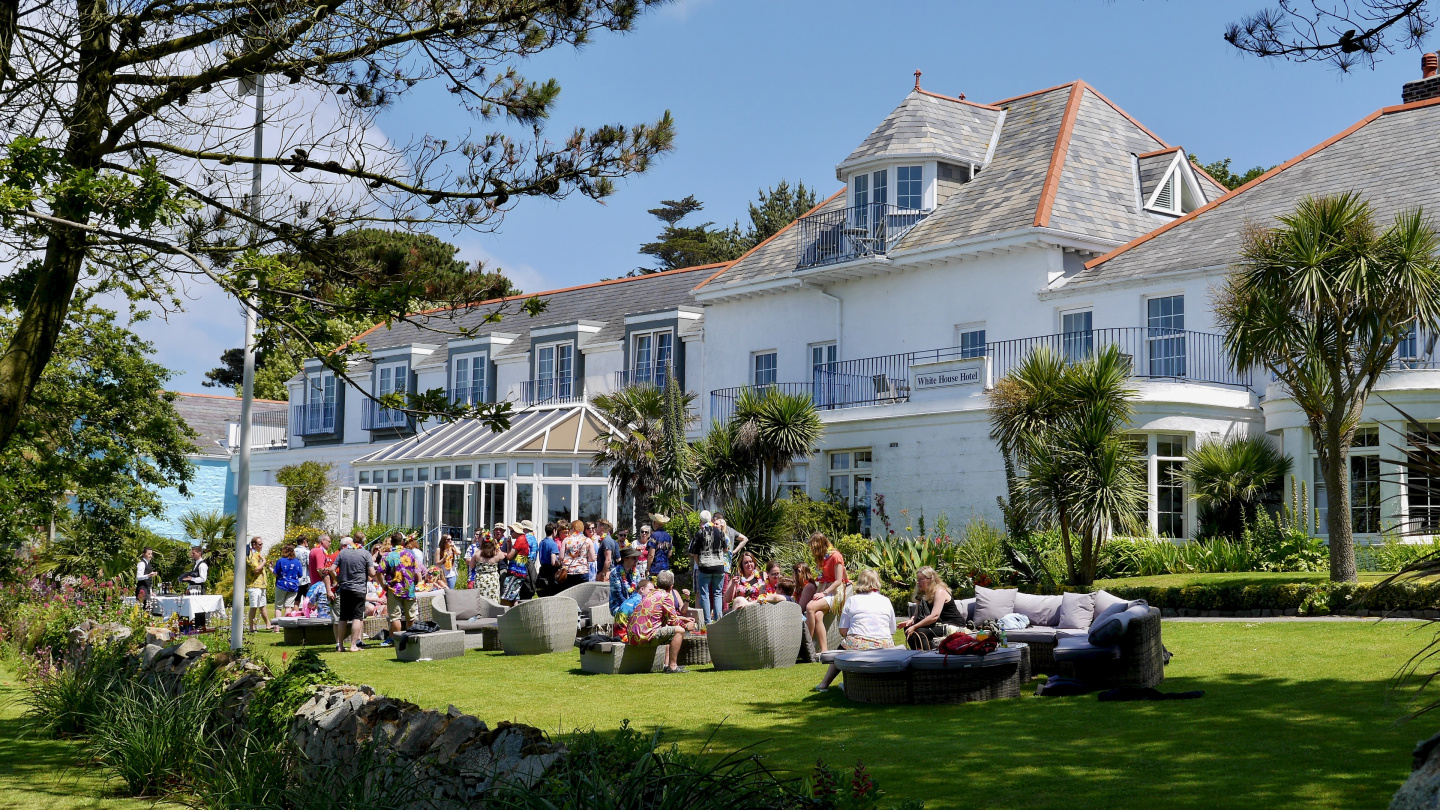
The granite cliffs of the southern coast rise up to the height of 40 metres and the hills are spread over the whole width of the island. The footpath ascended up the cliffs for passing the capes and descended back to the next bay just continuing on to the cliffs of the next cape; up and down with a hill at a time. At times the path was very narrow and following the edge of the cliff with a steep slope and then in turn it dived across a lush forest into the next cape. We really had to be careful on the rocky footpath as there were some loose stones and steep drop next to us.

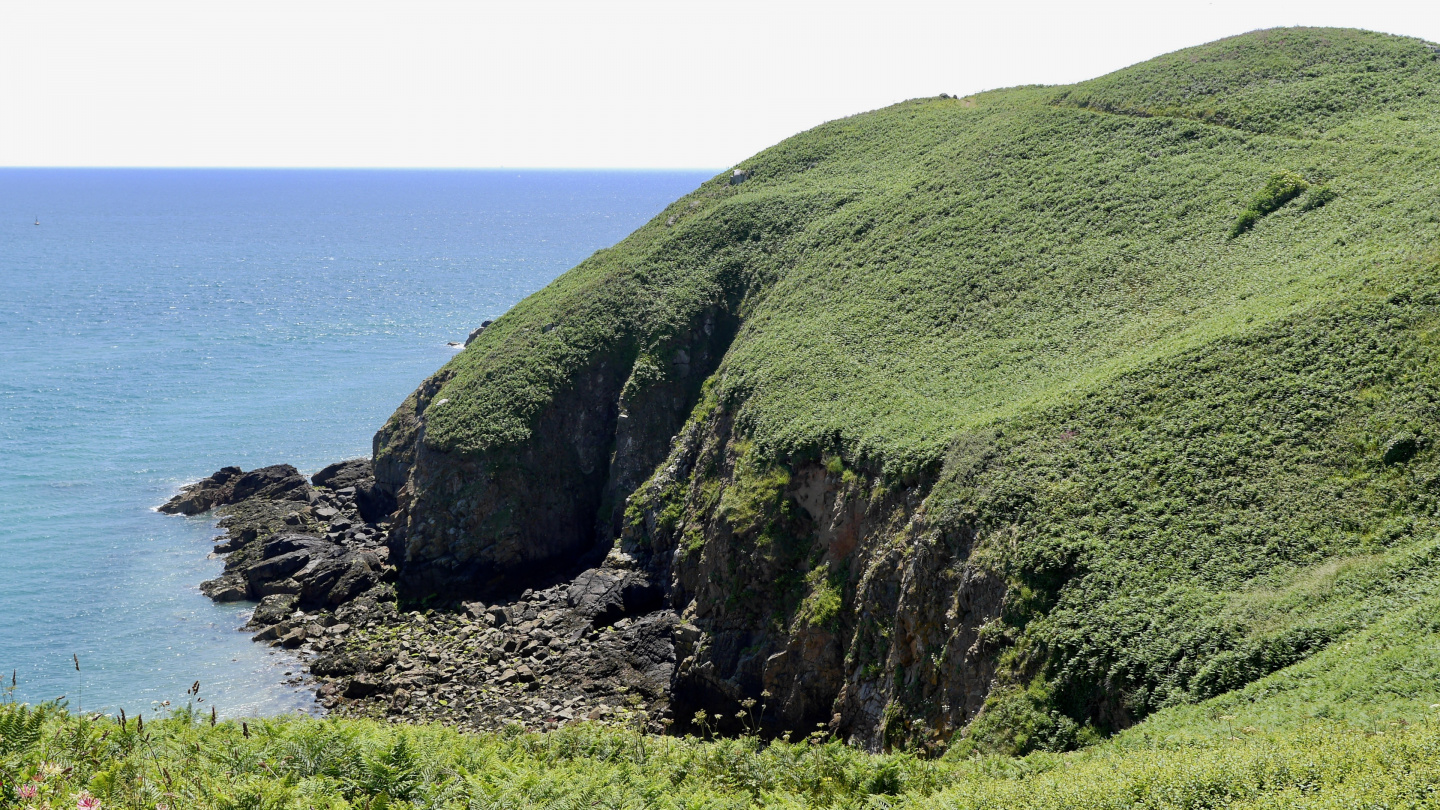
After closing the island tour next to Pikku Suwena on the Shell Beach our legs were feeling like spaghetti. But there was still one more chore left. The tide had pulled back and now there were 100 metres of soft sand between Pikku Suwena and the sea.
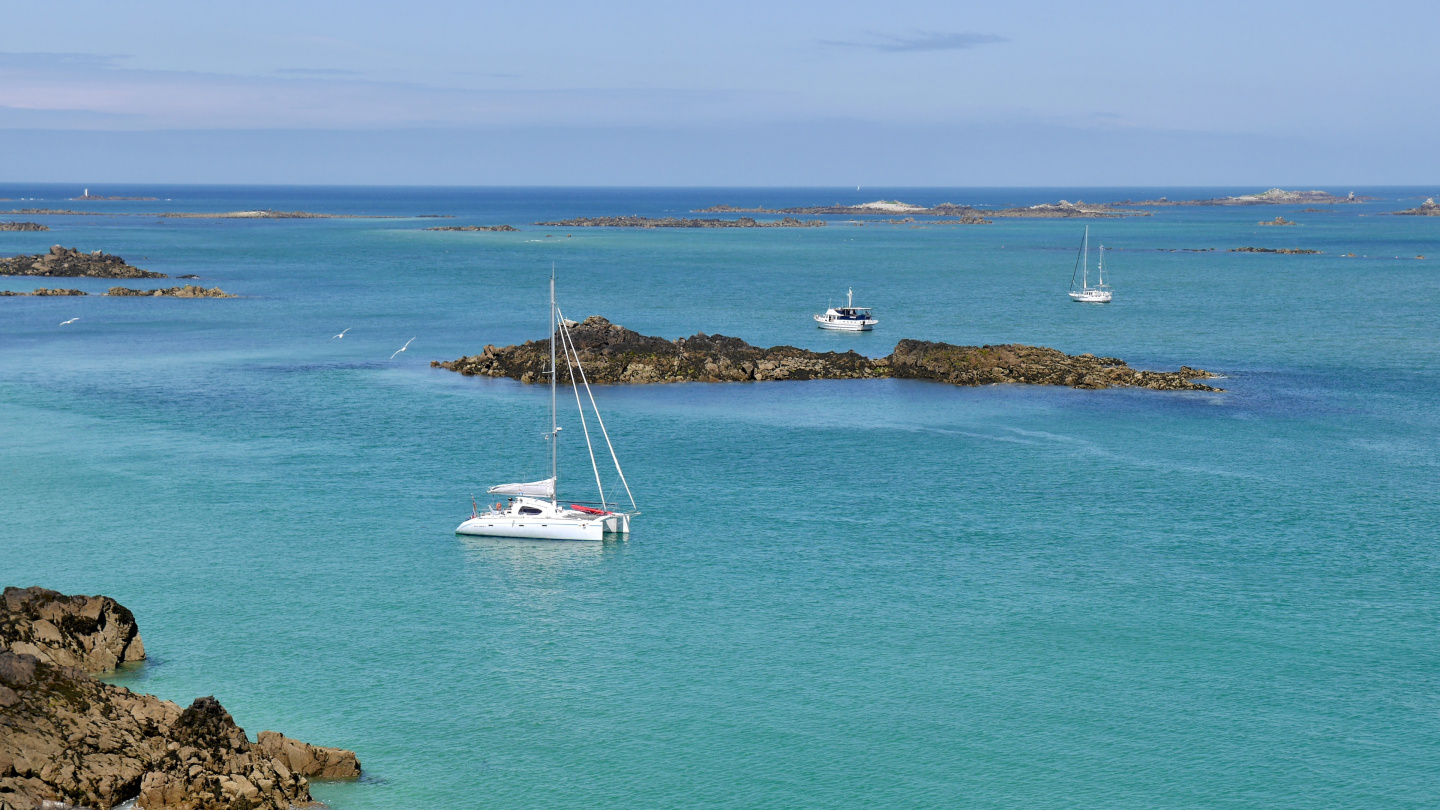
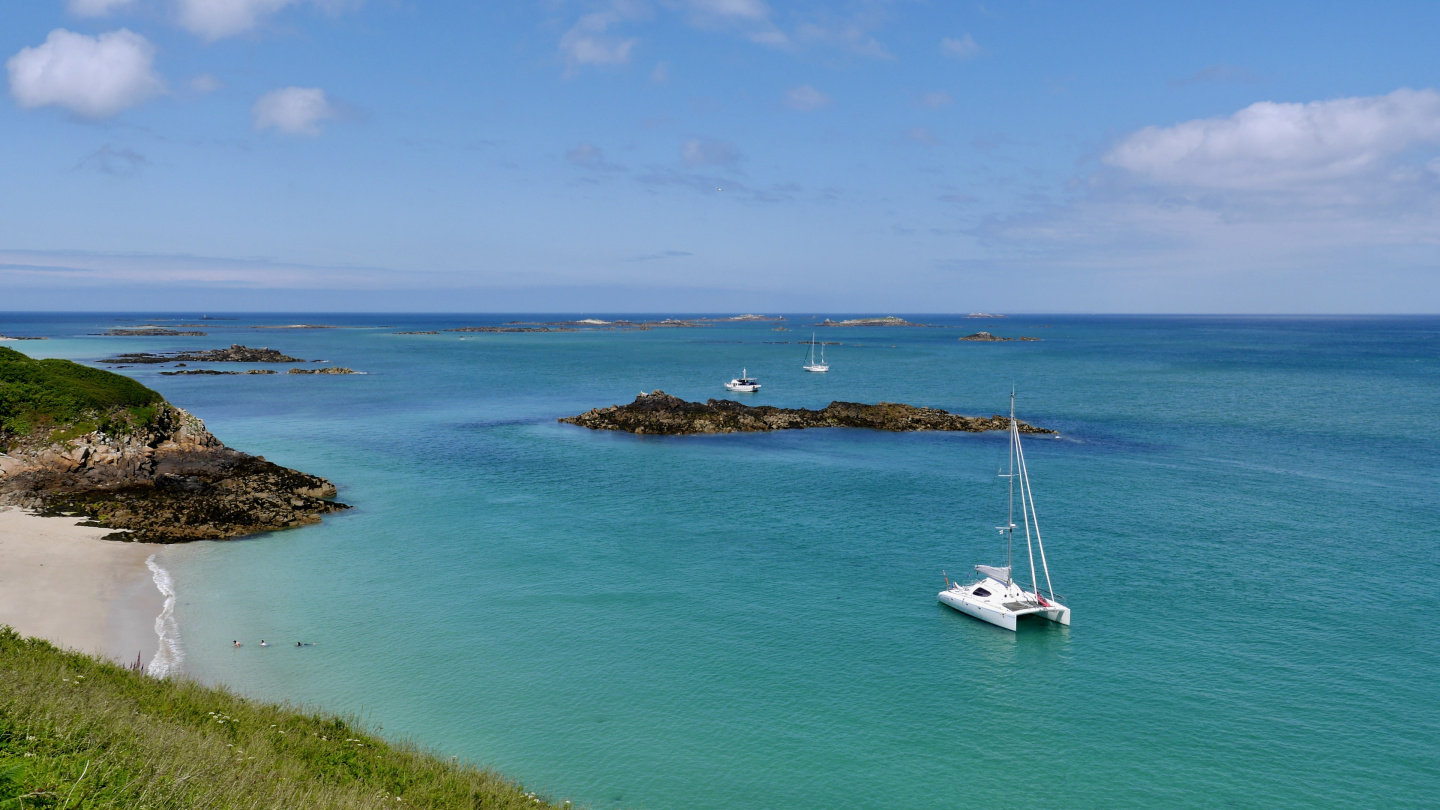
And then we were navigating around shoals and rocks that are revealed during the low water. Suwena however was waiting for us, floating peacefully. We lifted Pikku Suwena to the davits and after weighing the anchor set course towards the island of Sark that could be seen in southeast.

The day trip to Herm was cool. Herm is very well kept. Despite of so many visitors there was no littering and the rubbish cans are readily available along all the paths. This may sound self-evident but by visiting in many islands it is definitely not the norm.
The peace and tranquillity of Herm is further enhanced by the ban of cars and bicycles. Only quad bikes and tractors that are necessary for transporting the visitor’s luggage is allowed.
We left Herm with beaming smiles and totally happy!

